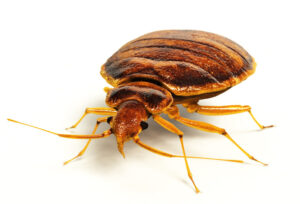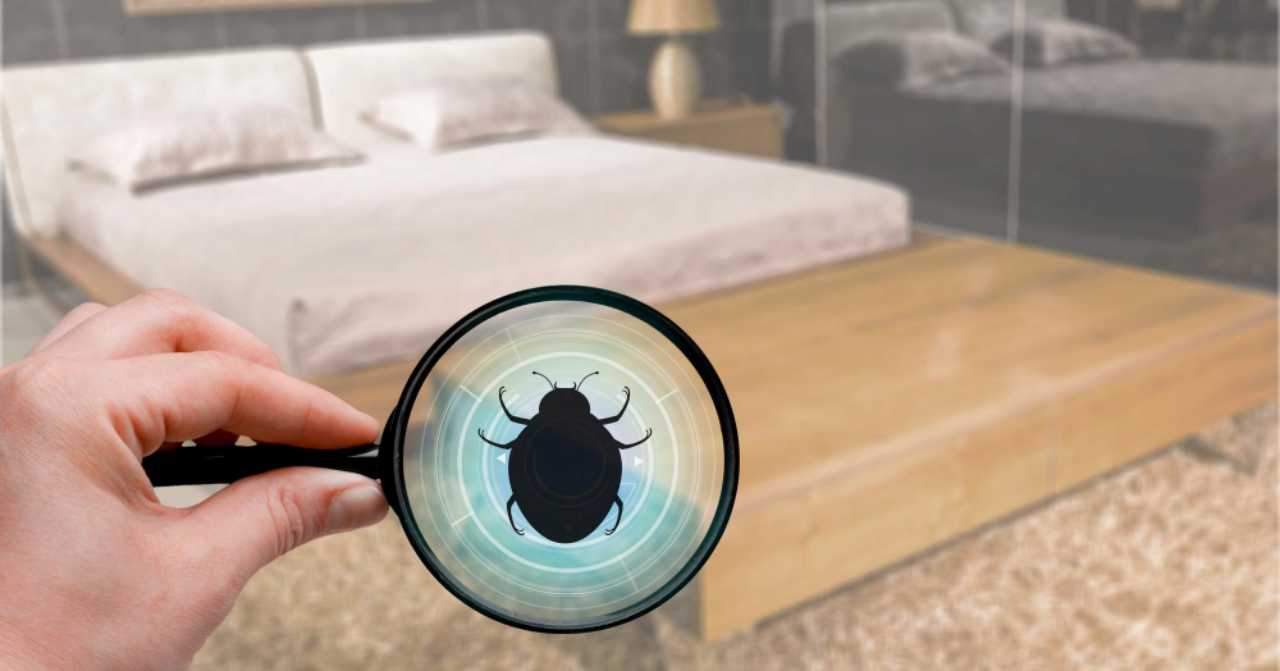It’s not at all uncommon to encounter the pesky problem of bed bugs, and for residents in Canada, dealing with these unwelcome pests can be especially challenging. Bed bugs are notorious for their ability to infest homes, hotels, and even public spaces, making them a persistent nuisance that can disrupt our daily lives and cause considerable discomfort – and so, knowing how to get rid of bed bugs in Canada is crucial for residents, including first-time OFWs here.
From identification to prevention and treatment methods, you’ll discover the necessary steps to reclaim a bed bug-free environment and restore peace of mind. So, if you’re ready to bid farewell to these tiny intruders, let’s delve into the world of eradicating bed bugs in Canada.
Contents
Bed Bugs: Are They Common in Canada?
Bed bugs are indeed common in Canada and can infest various types of homes.

These tiny, blood-sucking insects have a knack for hiding in dark corners such as furniture, carpets, and wallpaper during the day, only to emerge at night to feed on unsuspecting humans while they sleep.
The prevalence of bed bugs extends beyond specific regions, with several Canadian cities experiencing notable infestations.
Among them are Ottawa, Vancouver, Winnipeg, and Toronto, where bed bug problems have been particularly pervasive.
Additionally, cities like Calgary, Scarborough, Sudbury, Halifax, Edmonton, and St. John’s have also dealt with their fair share of bed bug issues.
It is important to recognize the widespread nature of bed bug infestations in Canada and take appropriate measures to address them effectively.
Signs of Bed Bug Infestations
Discovering a bed bug infestation in your home can be a distressing experience.
These elusive pests can quickly multiply and cause discomfort, making it essential to identify the signs of an infestation as early as possible.
By recognizing the following indicators, you can take prompt action to address the problem and prevent it from spreading further.
Here are some common signs to look out for:
- Bites and Skin Reactions: One of the first signs of a bed bug infestation is waking up with unexplained bites on your skin. These bites often appear in clusters or a line pattern and are accompanied by itchiness and redness. While not everyone reacts to bed bug bites, some people may develop allergic reactions or more severe skin irritations.
- Bloodstains on Bedding: Bed bugs feed on human blood, and as a result, you may find small bloodstains on your bedding or pajamas. These stains are typically the result of accidentally squashing a bed bug after it has fed.
- Dark Spots and Stains: Bed bugs leave behind dark spots and stains on bedding, mattresses, or furniture. These spots are actually their excrement and may appear as small dots or smears. Look for them on the mattress seams, headboard, and nearby furniture.
- Musty Odor: A distinct, sweet, musty odor is often associated with large bed bug infestations. If you notice an unusual smell in your bedroom or other areas of your home, it could be an indication of bed bug activity.
- Visible Bed Bugs: Adult bed bugs are small, oval-shaped insects that are about the size of an apple seed. While they are adept at hiding in cracks and crevices, you may occasionally spot them on your mattress, bedding, or furniture. Bed bugs are reddish-brown in color, but they can appear darker or more transparent depending on when they last fed.
- Shed Exoskeletons: As bed bugs grow, they shed their exoskeletons. These discarded shells, which resemble empty bed bug skins, can often be found in areas where bed bugs hide, such as mattress seams, crevices, or behind furniture.
- Fecal Smears: Bed bugs also leave behind fecal stains, which appear as dark brown or black spots on surfaces. These stains are a result of their digestion process and can be found on bedding, walls, or furniture.
If you notice any of these signs in your home, it’s crucial to take immediate action to address the bed bug infestation.
Step-by-Step Guide to Getting Rid of Bed Bugs
Dealing with a bed bug infestation can be a challenging task, but by following these step-by-step instructions, you can effectively eliminate these pests from your home.
Whether you choose to tackle the problem yourself or seek professional assistance, these guidelines will help you regain control over your living space:
Step 1: Confirm the Infestation
- Look for live bed bugs, dead bugs, or their shed exoskeletons in your mattress seams, furniture, or nearby areas.
- Check for red spots of fecal matter on your bedsheets or mattresses, as these can indicate bed bug activity.
Step 2: Clean and Vacuum Regularly

- Start by thoroughly cleaning your bedroom and other affected areas. Vacuum the mattress, furniture, carpets, and baseboards to remove any visible bed bugs, eggs, or fecal stains.
- Remember to dispose of the vacuum bag or empty the canister in a sealed plastic bag immediately afterward.
Step 3: Protect Mattresses and Box Springs
- Encase your mattresses and box springs with certified bed bug encasements.
- These specialized covers act as a protective barrier, preventing bed bugs from entering or escaping from these areas.
- Be sure to select encasements specifically designed to trap bed bugs.
Step 4: Launder and Heat-Treat Bedding
- Remove all bedding, including sheets, pillowcases, blankets, and bed skirts.
- Launder them in hot water (at least 120°F or 50°C) and dry them on high heat for at least 30 minutes.
- This heat treatment will effectively kill any bed bugs or eggs that may be present.
Step 5: Inspect and Treat Furniture
- Thoroughly examine all furniture near sleeping areas, such as nightstands, chairs, and sofas.
- Check the seams, crevices, and folds where bed bugs often hide.
- Use a vacuum to remove any visible bed bugs and consider using a steam cleaner to treat infested furniture, as the high temperature can kill the bugs and their eggs.
Step 6: Seal Cracks and Crevices
- Inspect your bedroom and surrounding areas for cracks in walls, trim, baseboards, and bed frames.
- Seal these cracks with caulk or another appropriate sealant to prevent bed bugs from hiding or traveling through them.
Step 7: Prevention Measures
- Implement preventive measures to minimize the risk of future infestations.
- These include regularly cleaning and vacuuming your bedrooms, using light-colored sheets to spot any stains or signs of bed bugs, and being cautious while traveling to avoid bringing bed bugs home with you.

Step 8: Consider Professional Pest Control
- Given the resilience and elusive nature of bed bugs, seeking professional pest control services may be the most effective solution.
- Professional exterminators often employ specialized techniques, such as the use of bed bug detection dogs, to locate and eliminate the infestation thoroughly.
- They can also provide tailored treatment plans to ensure the complete eradication of bed bugs from your home.
Remember, the sooner you take action against a bed bug infestation, the better your chances of eliminating them entirely. Whether you choose to handle the process yourself or enlist professional help, persistence and thoroughness are key to getting rid of bed bugs and reclaiming a pest-free living environment.
Expert Tips to Avoid Future Bed Bug Infestations
After successfully eliminating a bed bug infestation, it’s important to take proactive measures to prevent future infestations.
Bed bugs are resilient pests that can easily hitch a ride into your home, so implementing preventative strategies is key to keeping them at bay. To help you avoid future bed bug problems, here are some expert tips to follow:
1. Be Mindful of Your Surroundings:
- When you’re in public spaces, such as hotels, movie theaters, or public transportation, be vigilant and aware of the potential for bed bugs.
- Avoid placing your belongings on the floor or infested furniture and inspect your luggage and clothing before bringing them back home.
2. Inspect Secondhand Items:
- Before bringing used furniture, clothing, or other items into your home, thoroughly inspect them for signs of bed bugs. Check seams, folds, and crevices carefully.
- Consider treating secondhand items with heat or cold treatments to ensure any potential bed bugs are eliminated.
3. Use Protective Covers:
- Encase your mattresses, box springs, and pillows with certified bed bug encasements.
- These covers create a barrier that prevents bed bugs from infesting your sleeping areas and makes it easier to detect any early signs of an infestation.
4. Maintain Cleanliness and Clutter-Free Spaces:
- Regularly clean and vacuum your home, paying close attention to bedrooms, furniture, and areas near sleeping areas.
- Bed bugs thrive in clutter, so keep your living space tidy and minimize potential hiding spots.
5. Launder Bedding and Clothing:
- Wash your bedding, including sheets, pillowcases, and blankets, on a regular basis.
- Use the hottest water temperature allowed for the fabric and dry them on high heat.
- Additionally, if you suspect any clothing has come into contact with bed bugs, launder them promptly.
6. Practice Smart Travel Habits:
- When traveling, inspect your accommodation for signs of bed bugs, such as dark spots, shed exoskeletons, or live bugs.
- Keep your luggage elevated on luggage racks or use luggage stands rather than placing it on the floor.
- Upon returning home, unpack your luggage outside and launder your clothing immediately.
7. Seal Entry Points:
- Take the time to seal any cracks or gaps in walls, baseboards, and around utility openings.
- Bed bugs can enter your home through these small openings, so sealing them off can act as a barrier against infestations.
8. Seek Professional Pest Control:
- If you suspect or encounter a bed bug infestation, don’t hesitate to reach out to professional pest control services.
- Experts have the knowledge, experience, and tools to effectively eliminate bed bugs and provide ongoing prevention strategies tailored to your home.
By following these expert tips, you can significantly reduce the risk of future bed bug infestations in your home. Stay vigilant, practice good hygiene, and be proactive in implementing preventative measures. Remember, prevention is the key to maintaining a bed bug-free environment and ensuring a good night’s sleep for you and your family.
Video: How to Get Rid of Bed Bugs | DIY Pest Control
So, you think you might have a bed bug infestation in your home?
Don’t worry, we’ve got you covered! In this informative video, we’ll guide you through the process of getting rid of bed bugs before they become a serious problem.
From identifying the signs of an infestation to implementing effective treatment methods, we’ll provide you with valuable tips and techniques to tackle these pesky pests.
Plus, make sure to visit our DIY Pest Control playlist for more helpful pest control tips. Don’t let bed bugs take over your home – take action now!
Summary
In conclusion, dealing with bed bug infestations in Canada requires a proactive and thorough approach.
By familiarizing yourself with the signs of an infestation, implementing preventive measures, and following the step-by-step guide to eliminating these pests, you can successfully get rid of bed bugs and prevent their return.
Whether you choose to handle the process independently or seek professional assistance, persistence and attention to detail are essential for achieving a bed bug-free environment.
Remember, early detection and swift action are key to minimizing the impact of bed bugs and restoring comfort to your home.
With the knowledge and strategies provided in this guide, you are equipped to tackle the challenge of bed bugs and regain peace of mind in your living space.
READ NEXT: Financial Management and Budgeting Tips for OFWs in Canada

Comments are closed.